How Wes Bush and ProductLed Generated $1 Billion in Self-Serve Revenue: 3 Product-Led Strategies That Transformed 400+ SaaS Companies
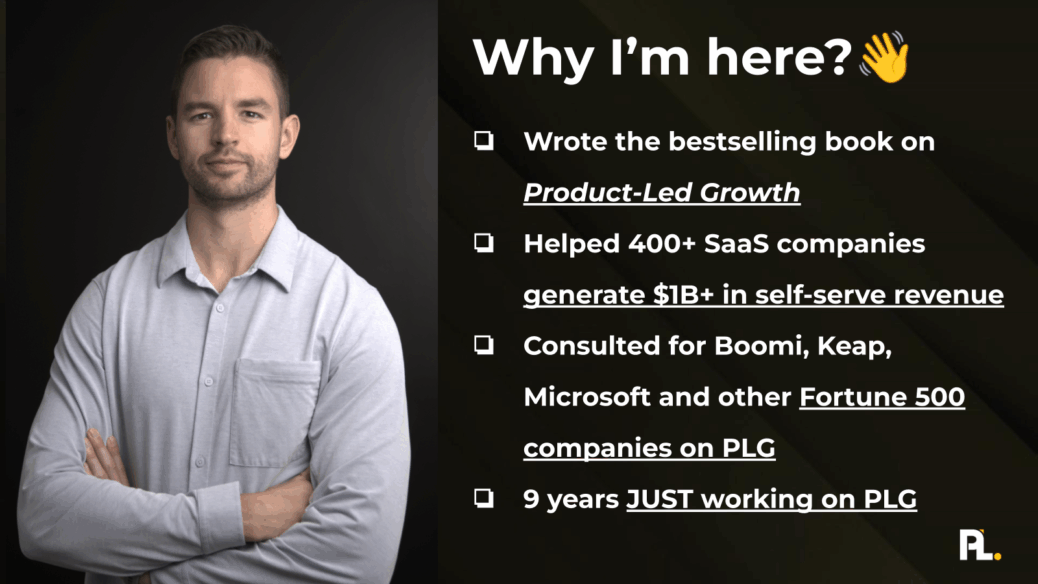
This article was written and sourced from Wes Bush’s keynote presentation at Founderpath’s last event. The images embedded below are from the 56 page slide deck. The full keynote recording is here.
Wes Bush transformed from a frustrated product professional at Vidyard into the founder of ProductLed, helping 400+ SaaS companies generate over $1 billion in self-serve revenue. His journey reveals a critical insight: only 20% of his clients—the founders—generated 80% of the results, while product professionals treating product-led growth as merely a “product thing” consistently failed.
The Playbook: 3 Core Strategies from ProductLed’s $1B Revenue Generation
After helping 324+ SaaS companies generate over $1 billion in self-serve revenue, Bush identified three critical strategies that separate successful product-led companies from failures. These aren’t just surface-level tactics—they’re foundational elements that create what Bush calls a “Product-Led Organization” rather than just implementing product-led growth motions.
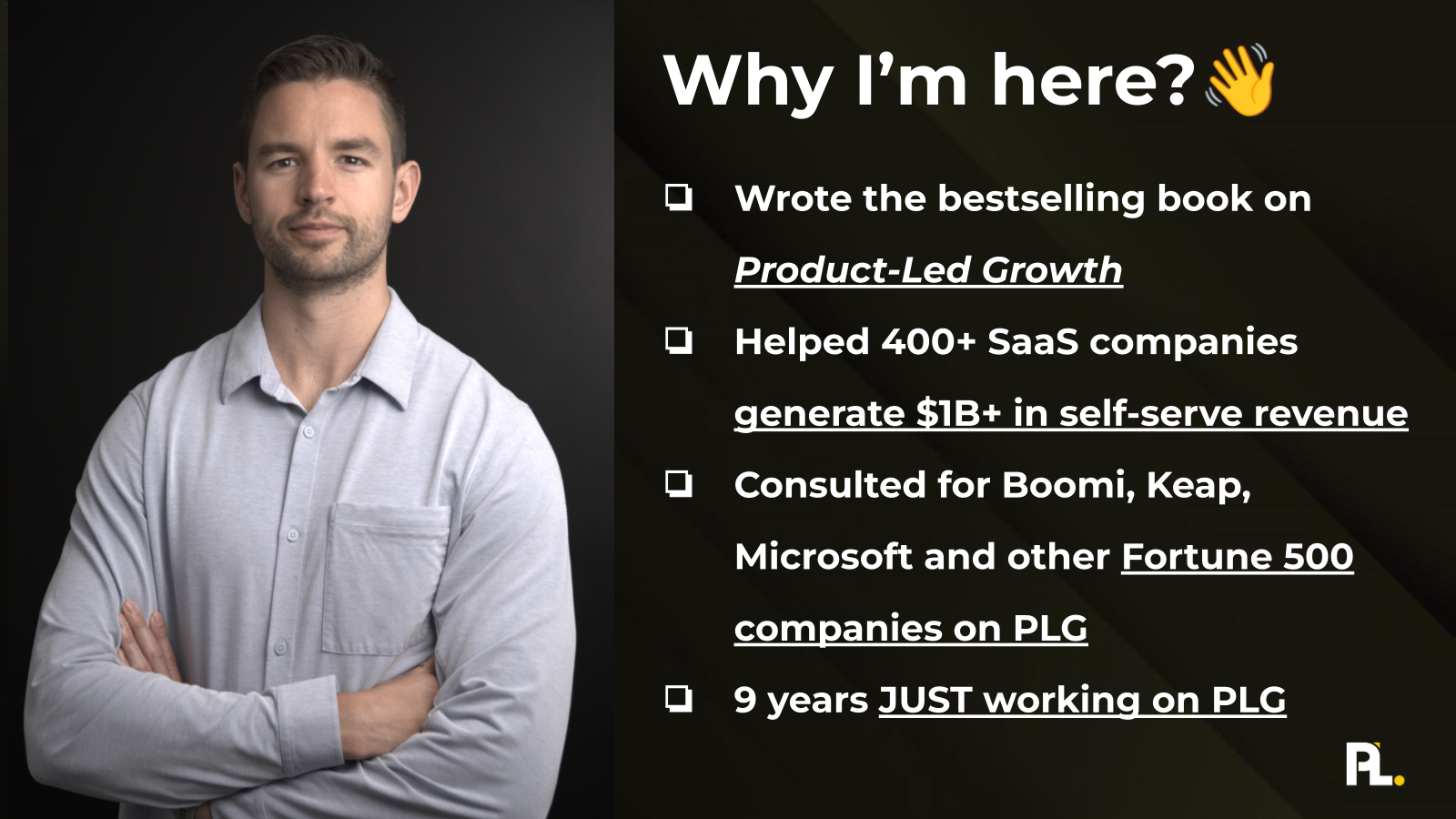
Strategy 1: Build a Winning “Obvious Choice” Strategy – Companies must become the clear leader in one specific market segment rather than trying to appeal to everyone. Bush’s “Bullseye Strategy Framework” forces companies to answer five critical questions about market positioning.
Strategy 2: Design an Intentional Free Model – The ProductLed team discovered that Snappa’s email verification bottleneck meant 27% of signups never entered the product, costing them significant revenue. The right free model acts like the flower in Mario—transforming users into something more powerful.
Strategy 3: Create Frictionless Onboarding – Bush’s “Bowling Alley Framework” eliminates every unnecessary step between signup and value. After removing friction, Snappa saw a 20% bump in MRR after just 6 months from that small change.
2016: How ProductLed Started with a Chrome Extension at Vidyard
Bush’s breakthrough happened in 2016 while working at Vidyard, where he helped launch a free Chrome extension that attracted over 100,000 users in less than one year. This experience challenged everything he knew about traditional B2B sales and marketing.
The Chrome extension’s explosive growth without a sales team proved that products could sell themselves when designed correctly. This wasn’t just about adding a free trial or making pricing transparent—it required fundamentally rethinking how software companies acquire, activate, and retain customers. Learn more about product-led growth strategies that transform traditional sales models.
Over the next three years, Bush consulted with hypergrowth and Fortune 500 software firms on leveraging free products for faster growth, ultimately establishing himself as a thought leader with his bestselling book that sold over 100,000 copies globally through word-of-mouth.
2019: How Product-Led Growth Book Reached 100,000+ Copies Through Word-of-Mouth
In 2019, Bush published “Product-Led Growth: How to Build a Product that Sells Itself,” which became a bestseller with over 100,000 copies sold globally through word-of-mouth. The book’s success wasn’t driven by traditional marketing—it spread because it solved a real problem for SaaS companies struggling with high customer acquisition costs.
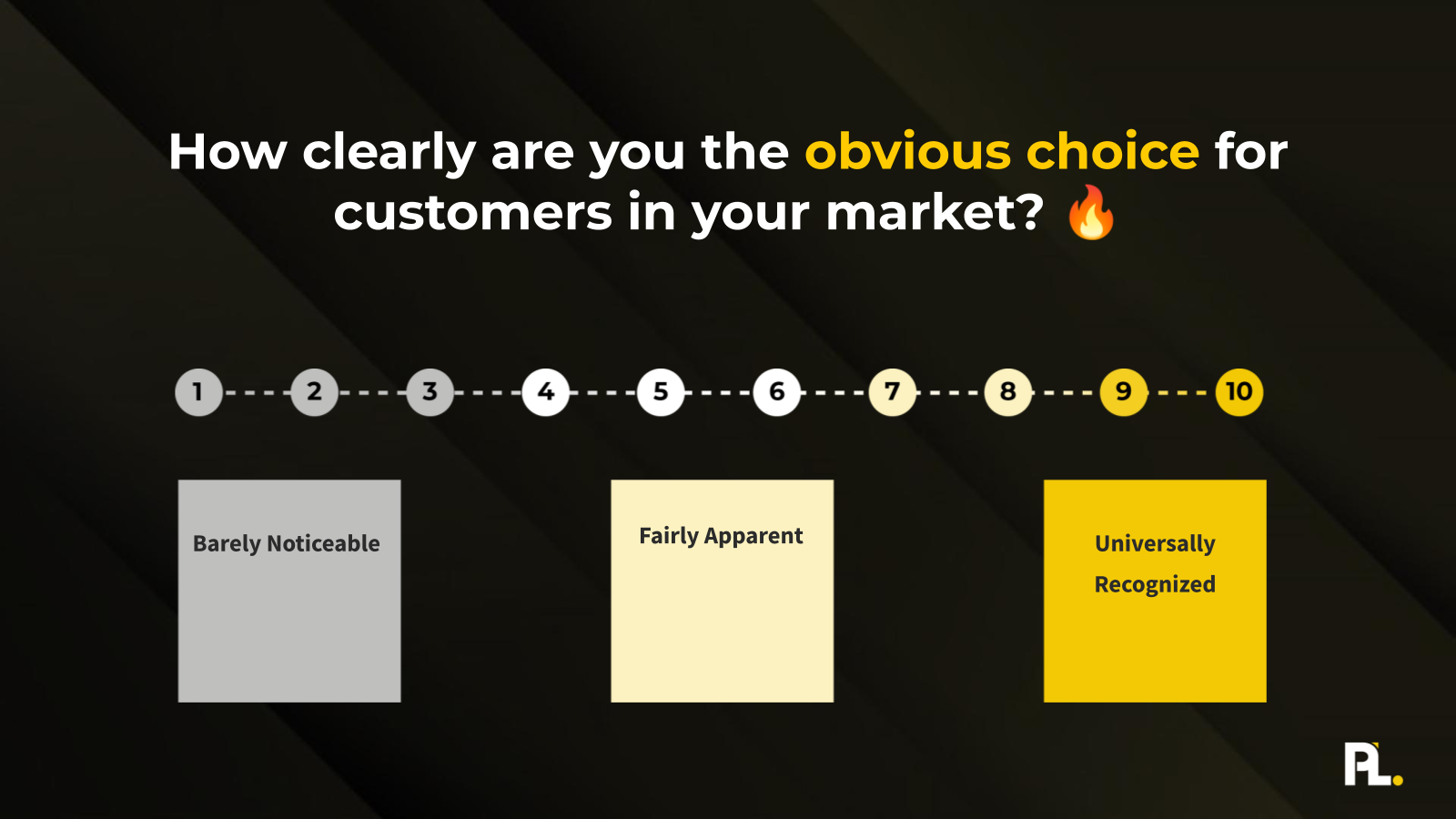
The book introduced frameworks that became industry standards, including the Product-Led Growth Flywheel and the concept of Product-Qualified Leads (PQLs). These weren’t theoretical concepts—they were battle-tested strategies from Bush’s work with hundreds of companies.
The massive success prompted the rebranding of his consultancy in 2020 to ProductLed, and by 2023, Bush designed a live coaching program exclusively for SaaS founders scaling from $100,000 to 8 figures and beyond.
The $1B Discovery: Why Founders Succeed Where Product Teams Fail
After analyzing all 324+ customers, Bush discovered a shocking pattern that changed how ProductLed approaches client engagement. While 80% of clients were senior product professionals—their ideal customer profile—only 20% were founders. Yet those founders generated 80% of the successful results.
The difference? Product professionals treated PLG as a “product thing” while founders understood it required building a complete Product-Led Organization. They focused only on surface-level elements like free trials, transparent pricing, and onboarding improvements while ignoring the foundational infrastructure needed for success.
- Product teams implemented features without aligning company strategy
- They lacked the authority to change pricing models or go-to-market approaches
- They couldn’t access or influence the necessary cross-functional resources
- They missed critical elements like team capabilities, product data, and organizational alignment
This insight led Bush to develop the ProductLed System™, a comprehensive approach that addresses all nine core components needed for successful product-led growth implementation.
Strategy Deep Dive: The Bullseye Framework for Becoming the Obvious Choice
Bush’s first strategy challenges companies to stop trying to be everything to everyone. The Bullseye Strategy Framework, adapted from the book “Essentialism,” focuses company energy like a laser rather than diffusing it across multiple directions.
The framework requires answering five critical questions:
- Which market can you dominate? – Identify one specific segment where you can become the undisputed leader
- Where will you play? – Define your ideal customer, the problem you solve, and your primary marketing channels
- How will you win? – Build hard-to-copy moats through differentiation, operational efficiency, or superior user experience
- What’s your winning picture? – Create clear one-year and quarterly goals that your entire team understands
- What strategic choices must you make? – Identify what you’ll say no to in order to focus energy effectively
Bush emphasizes that companies must choose no more than two or three moats to build. Trying to excel at everything results in mediocrity across the board. The most successful ProductLed clients pick their battles carefully and execute relentlessly. For more insights on building competitive advantages, explore strategic partnership approaches.
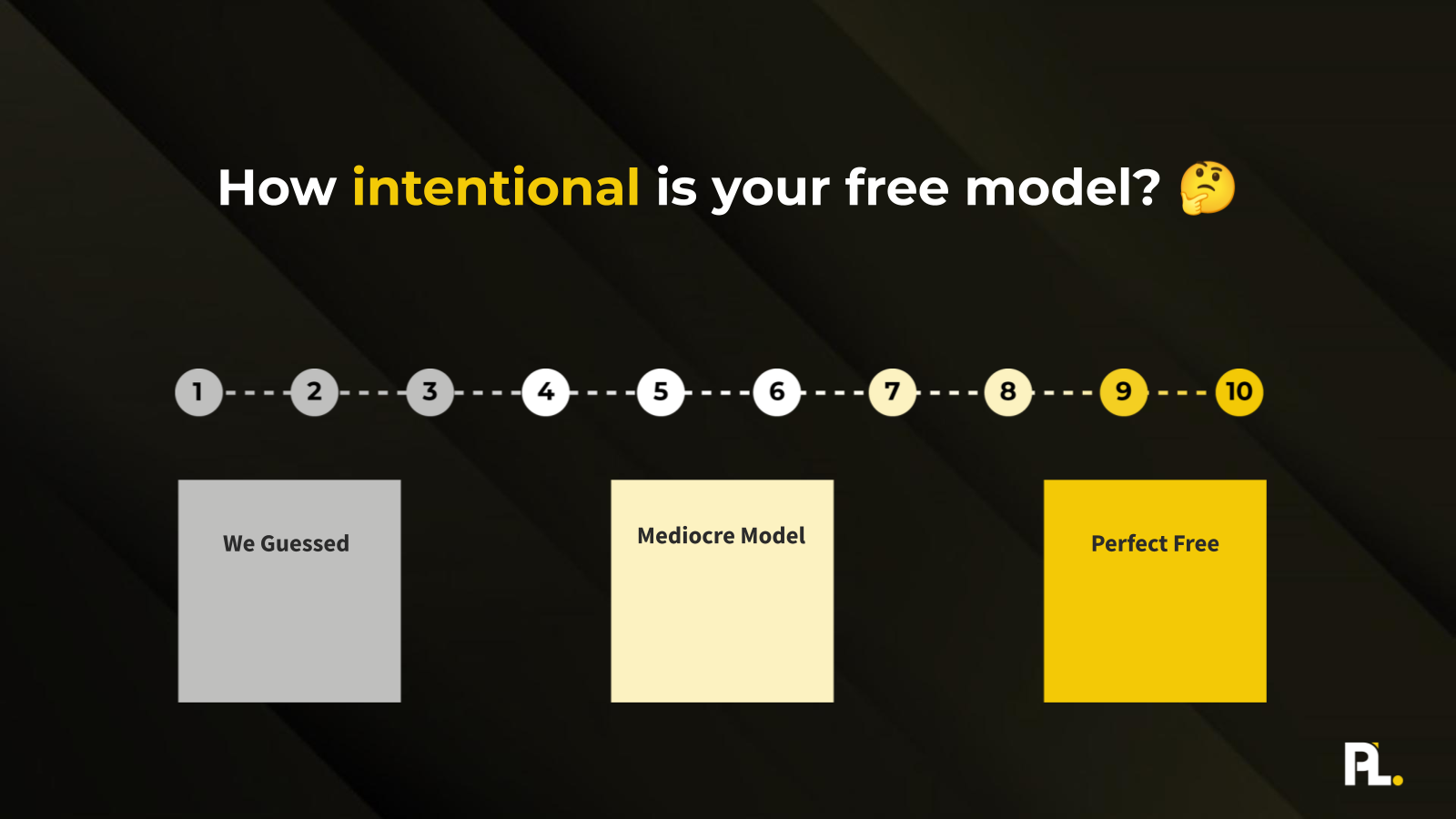
The Mario Model: Designing Free Experiences That Transform Users
Bush’s second strategy uses a surprising analogy: Super Mario. When Mario picks up a fire flower, he transforms—becoming bigger, stronger, and capable of things he couldn’t do before. This is exactly how your free product experience should work.
Most companies fail at this fundamental level. Their free trials leave users exactly the same—no transformation, no “aha” moment, no compelling reason to continue. Bush identifies three common mistakes:
The “No Transformation” Problem: Users sign up for a free trial but experience no meaningful change. They remain the same person with the same capabilities, just with temporary access to features.
The “Everything Free” Problem: Some VC-backed companies give away so much value that users have no reason to upgrade. Bush shares his personal example of using Evernote free for eight years before paying.
The “Feature Confusion” Problem: Companies focus on showcasing features rather than enabling users to achieve meaningful outcomes during their trial period.
Tettra’s Transformation: From Flat Growth to Hockey Stick with Freemium
Tettra faced a common knowledge management challenge: their 15-30 day free trial wasn’t long enough for users to experience value, especially since the software required team buy-in and training time, meaning they asked for payment before users discovered value.
The company made a bold decision to switch from free trial to freemium. After the freemium launch, while cohorts started substantially lower, they consistently built over time—the difference between building on sand versus bedrock.
The results transformed their business trajectory:
- The freemium switch tripled the number of upgrades by the 5th quarter
- User retention never dipped below 70% after the freemium launch and consistently showed retention rates over 100% throughout the year
- MRR growth became sustainable despite initial concerns about giving away value
This case perfectly illustrates Bush’s point: when your product’s core value takes time to manifest, forcing artificial time limits destroys conversion potential. Understanding your product’s true viral growth mechanics is essential for choosing the right model.
The Bowling Alley Framework: Engineering Frictionless User Journeys
Bush’s third strategy, the Bowling Alley Framework, reimagines onboarding as a bowling lane where every element guides users toward their first “strike”—the moment they experience core value.
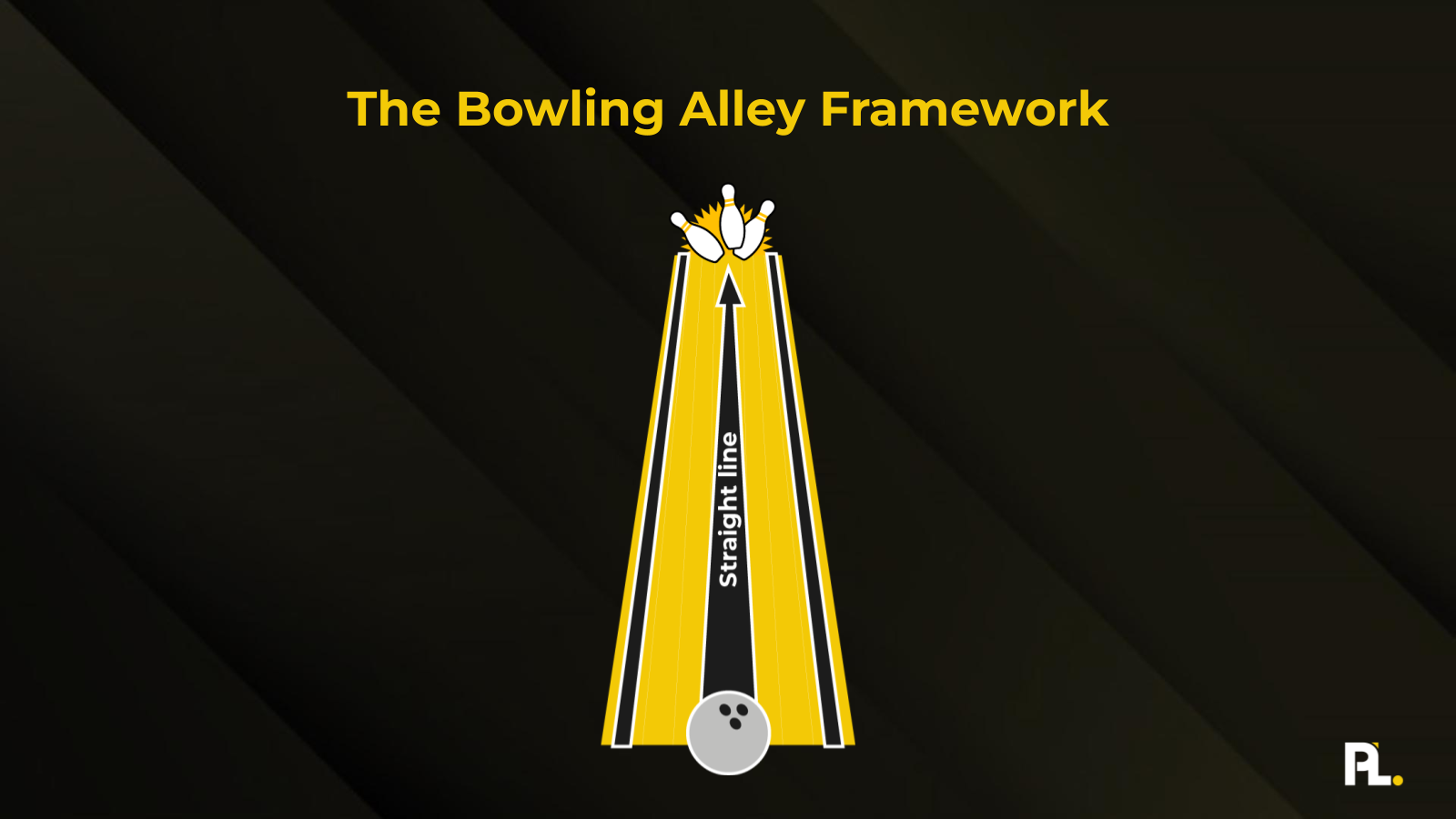
The framework has four components:
1. Define Your Strike: Identify the exact moment users first experience meaningful value. This isn’t account creation or profile completion—it’s the first time they achieve something they couldn’t before.
2. Build a Straight Line: Map every step from signup to strike. Ruthlessly eliminate red steps (unnecessary), delay yellow steps (advanced features), and keep only green steps (essential for first value).
3. Add Product Bumpers: Use in-product guidance to keep users on track, but only for essential steps. Random tooltips pointing at every feature create noise, not guidance.
4. Create Conversational Bumpers: Use emails, texts, or even LinkedIn outreach to bring users back when they drop off. Bush’s teams have successfully reached out personally to stuck users offering setup help.
Snappa’s 20% MRR Boost: The Power of Removing One Friction Point
Christopher Gimmer, founder of Snappa, discovered through conversation with Bush that a single friction point was destroying their growth. After removing the email activation requirement at signup, Snappa’s MRR grew substantially, resulting in a 20% boost.
The problem was universal across SaaS: requiring email verification before product access. When companies check their analytics, they typically find 10-30% of new signups never enter the product due to this single step.
Bush compares this to telling a child who waited in line for a roller coaster that they need to go back to the ticketing booth to reverify their ticket. The excitement dies, momentum stops, and many never return.
The solution implemented by Snappa:
- Allow immediate product access after signup
- Delay email verification until the second login
- Show value before asking for verification
- Make the verification process contextual and valuable
This single change demonstrates how small friction points compound into massive revenue losses. Every unnecessary step between signup and value realization costs real money. For guidance on optimizing conversion paths, check out proven organic growth strategies.
Building Your Product-Led Organization: The 9-Component System
Bush’s complete ProductLed System™ consists of nine interconnected components that work together to create sustainable growth. While the keynote focused on three strategies, the full system includes:
- Winning Strategy – Becoming the obvious choice in your market
- Intentional Model – Designing the perfect free experience
- Frictionless Onboarding – Removing barriers to value
- Product Data – Understanding user behavior at scale
- Team Capabilities – Building PLG-specific skills
- Organizational Alignment – Getting all departments rowing together
- Pricing Strategy – Creating natural upgrade paths
- Customer Success – Scaling support without human intervention
- Growth Loops – Building viral and referral mechanisms
Each component reinforces the others. Without proper product data, you can’t identify friction points. Without team capabilities, you can’t execute improvements. Without organizational alignment, product-led initiatives die in silos.
2024: The Product-Led Playbook Launch and What’s Next
During the keynote, Bush surprised attendees by announcing his new book “The Product-Led Playbook” with an October 1st release date—information not shared anywhere else publicly. The first five people to scan a QR code received free advance copies.
The new book addresses the critical gap Bush identified: most companies implement surface-level PLG tactics without building the foundational organization needed for success. It provides the complete blueprint for transforming any SaaS company into a product-led powerhouse.
The book introduces the complete 9-step system that has helped over 324 software companies scale successfully, providing actionable frameworks for each component of the ProductLed System™.
Key Metrics That Matter: Measuring Product-Led Success
Bush emphasizes that traditional SaaS metrics don’t capture product-led dynamics. Companies need to track:
Activation Rate: What percentage of signups achieve their first meaningful outcome? ProductLed benchmarks show 5-10% activation for product-led companies without sales teams.
Time to Value: How long from signup to first value realization? Every additional hour dramatically reduces conversion probability.
Natural Rate of Growth: What percentage of growth comes from product-driven acquisition versus sales and marketing efforts?
Product Qualified Leads (PQLs): Users who’ve experienced value and show buying signals through product usage, not just demographic fit.
Net Revenue Retention: The ultimate measure of product-led success—are customers naturally expanding their usage over time?
These metrics reveal whether you’ve built a true product-led engine or just added free trials to a traditional sales model. Companies achieving these benchmarks see dramatically lower customer acquisition costs and higher growth rates.
Common PLG Failures and How to Avoid Them
Through working with 400+ companies, Bush has catalogued the most common failure patterns:
The “Set It and Forget It” Trap: Companies launch a free trial and expect magic without continuous optimization. Product-led growth requires constant iteration based on user behavior data.
The “Feature Race” Mistake: Adding more features to free plans rather than focusing on enabling specific valuable outcomes. More features create confusion, not value.
The “Sales Compensation” Problem: Traditional sales comp structures actively fight against product-led motions. Reps cherry-pick the best product-qualified leads while ignoring the self-serve engine.
The “Metrics Blindness” Issue: Tracking vanity metrics like total signups while ignoring activation and time-to-value. Volume without value creation is worthless.
The “Organizational Silo” Challenge: Product teams trying to implement PLG without buy-in from sales, marketing, and leadership. This guarantees failure regardless of product quality.
The Future of Product-Led Growth: AI and Personalization
Bush sees artificial intelligence as the next frontier for product-led companies. Rather than replacing human interaction, AI will enable hyper-personalized product experiences at scale.
Emerging trends Bush is tracking:
- Intelligent Onboarding: AI that adapts the user journey based on behavior patterns and company characteristics
- Predictive Value Moments: Identifying the exact features each user needs at precisely the right time
- Automated Expansion: AI recognizing usage patterns that indicate readiness for plan upgrades
- Conversational Product Tours: Natural language interfaces replacing traditional onboarding flows
Companies already experimenting with these approaches see dramatic improvements in activation and conversion rates. The key is maintaining the human touch while leveraging AI for scale.
The Bottom Line: Product-Led Growth Requires Product-Led Organizations
Wes Bush’s journey from frustrated product manager to founder of ProductLed demonstrates a fundamental truth: product-led growth isn’t just a go-to-market strategy—it’s a complete organizational transformation. After helping 408+ clients generate over $1 billion in self-serve revenue, Bush has proven that success requires more than surface-level tactics.
The companies that succeed build complete Product-Led Organizations with aligned strategies, intentional free models, and frictionless user experiences. They treat PLG as a company-wide initiative, not a product team experiment. Most importantly, they focus relentlessly on enabling user success before asking for payment.
For SaaS founders looking to implement these strategies, the path is clear: stop thinking about product-led growth as a feature checklist and start building the organizational foundation for sustainable, product-driven revenue growth. The difference between the 80% who fail and the 20% who succeed isn’t talent or resources—it’s approaching PLG as a complete system rather than isolated tactics.
To access the complete keynote presentation and detailed implementation guides, visit Wes Bush’s 2024 NYC keynote resources where you’ll find frameworks, case studies, and tactical advice for building your own product-led organization.
If you’re an ambitious founder looking for capital to grow, we’d love to consider funding you at Founderpath. Click here to request capital.
Recent Articles
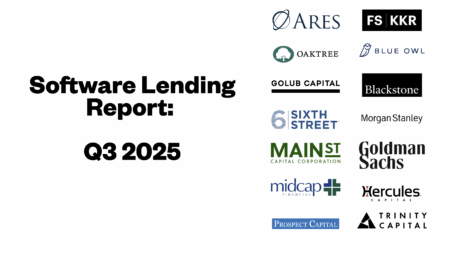
Software Debt Q3 2025 Benchmarks
As of Q3 2025, the country’s largest publicly traded direct lenders collectively hold $23.4 billion of software-related loans on their…
Top Growth Frameworks for Founders in 2025
The Ultimate Guide to Startup Growth Frameworks (With Real Founder Examples) Most founders think about growth in terms of tactics:…
Founderpath Frequently Asked Questions
What types of funding products does Founderpath offer? We currently offer two main products for B2B SaaS founders: Revenue-based financing:…